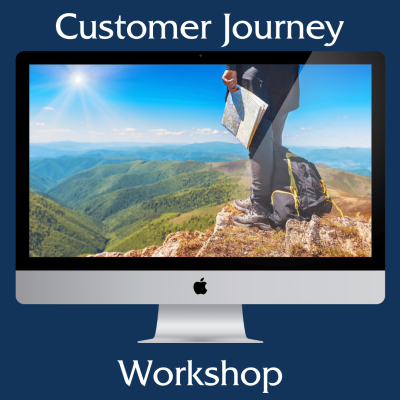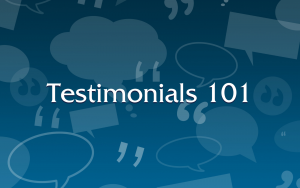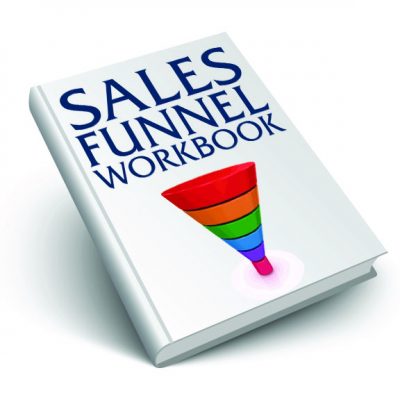
How To Ask For A Testimonial From A Client
I waited for weeks. My client said she loved my work, and promised to give me a testimonial, but she stopped returning my emails.
Putting aside my imposter syndrome, I looked at things from her perspective. She was an interview host by trade. The whole reason she hired me was because she didn’t want to write her emails and sales pages.
By asking her to volunteer her time to write a testimonial, I was giving her homework. That’s not nice to do, when you’re asking someone for a favour.
So I asked myself: what’s the best way to collect testimonials from a client?
The answer is: an interview.
How to Collect Customer Testimonials with Interviews
I called my client and asked her, “Can I interview you for about fifteen minutes, about what it was like working with me? I’ll take a lot of notes, and write up a short paragraph based on what you’ve said, and you can approve it or edit it to make sure it’s perfect.”
She was happy to oblige.
“Caelan has a great way of taking your vision and making it a reality. He works really well with visionaries – I speak it, and he makes it happen! His website design for The Aware Show really captured my personality, and his project management skills kept my entire team on track. The beautiful summits he put together helped us to grow our list and expand our audience. Caelan is always positive and keeps a positive outlook on life!”
– Lisa Garr, host of The Aware Show
She used the phrases and wording in this paragraph – I just plucked them out of our conversation, and put them in an order that made sense. I also made sure to ask her about specific things I wanted to include in the testimonial, as well.
By interviewing her about the experience of working with me, I took all the grunt work on myself, so all she had to do was chat with me. It was much more respectful of her time and attention, and when we are asking a client to do us a favour, we should be more respectful of them, not less.
Below I’ve listed answers to some of the most common questions I get about how to collect testimonials from clients. But first, if you would like to use my step-by-step process for collecting testimonials with interviews, then you should enroll in my 5-Day Testimonial Collection Challenge:
Frequently Asked Questions about Testimonials
Can testimonials be anonymous?
Technically, yes, but they are not as effective. Ranking the types of testimonials in order of effectiveness, from most to least:
- Testimonial with name and headshot
- Testimonial with name and position
- Anonymous testimonial
Where should testimonials go on a website?
The first home should be at yourwebsite.com/testimonials. If I’m ever doing any sort of web design for a client, I always make this page if they don’t have it already. This page can serve as the storehouse for your testimonials, so anytime you are making a piece of marketing collateral – designing a new brochure, or writing a sales page – you know exactly where to go to find your master collection.
In addition to having a dedicated Testimonials page (you can see mine here), you can also put testimonials on your website:
- Below the fold on your homepage
- In the footer
- In the sidebar
I do not recommend you put testimonials in a slider. (Read why sliders suck here.)
Who can give testimonials?
Anyone who has experienced a transformation because of you or your work can give you a testimonial. If you are just starting out on your entrepreneurial journey, ask your former co-workers, or anyone who has worked on a project with you to collaborate.
What’s a good testimonial email template?
Personally, I’ve found that asking for testimonials over email has limited effectiveness. It might get you a few nice words with little effort, but that’s generally what they provide you – nice words with little effort.
While I do recommend the testimonial interview process laid out in Testimonials 101, if you are going to ask for a testimonial over email, here’s a sample script:
Hey there, would you mind sending me a few sentences that I can use as a testimonial? I really enjoyed the work we did together, and sharing your thoughts on my work would help me to find more clients like you. I’d appreciate it if you could mention [TOPIC] or how I [QUALITY]. If you could please send me a short paragraph by [DATE] I would be very grateful.
How testimonials help your business
Studies have shown that 88% of people trust an online review as much as a personal recommendation. Even if they don’t know the person who gave the testimonial, 88% of people trust those strangers as much as one of their friends.
The social proof of having a good testimonials page can sway someone to make a buying decision in your favour.
What questions should I ask to get a good testimonial?
I have scripted my 6 best questions for collecting testimonials out in the free workbook that is part of Testimonials 101. Opt-in here:

About The Author
Caelan Huntress is the father of 3 kids, and in his spare time serves as creative director of Stellar Platforms. He is also a writer, digital marketer, multimedia producer, and a retired superhero. He blogs about his adventures on https://caelanhuntress.com.



 I am an American expat living in New Zealand, and I have spent ten years running an online business while traveling the world with my young family. I'm a website designer, copywriter, and sales strategist who specializes in creating online courses and sales funnels for bestselling authors, business coaches, and professional public speakers.
I am an American expat living in New Zealand, and I have spent ten years running an online business while traveling the world with my young family. I'm a website designer, copywriter, and sales strategist who specializes in creating online courses and sales funnels for bestselling authors, business coaches, and professional public speakers. 
